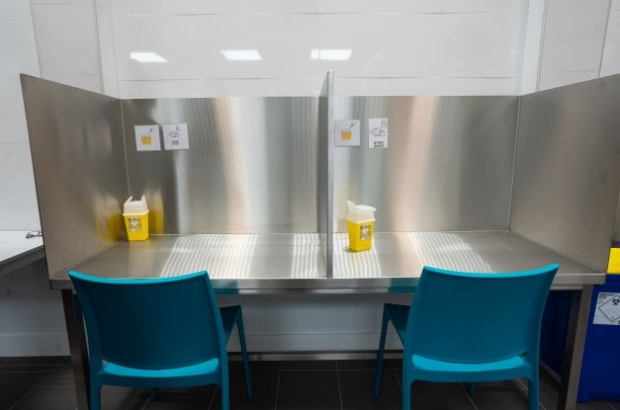- Daily & Weekly newsletters
- Buy & download The Bulletin
- Comment on our articles
Brussels’ first drug consumption space offers a safe haven for addicts by embracing harm reduction
The discreet poster at the entrance is the only indicator that this smart inner-city townhouse is actually a facility for hardened drug addicts.
Symbolically called Gate, it’s run by drug addiction service Transit and located in Rue de Woeringen, near Lemonnier. As Brussels’ first risk-reduction user space, it’s focused on saving lives, getting drugs off the streets and tackling the problem of opioid substance abuse via a range of practical measures.
Gate’s fixing rooms provide a clean and safe environment for drug taking, but they are also an enticement for users to meet health professionals and social workers who can help them overcome their addiction and rise above what is often a rock-bottom existence. It’s the entry point to an integrated service for a population that is typically hard to reach and hard to treat.
“By positioning ourselves as a place for care and treatment, more and more people are using the facility,” underlines Transit spokesperson Bruno Valkeneers (pictured below).
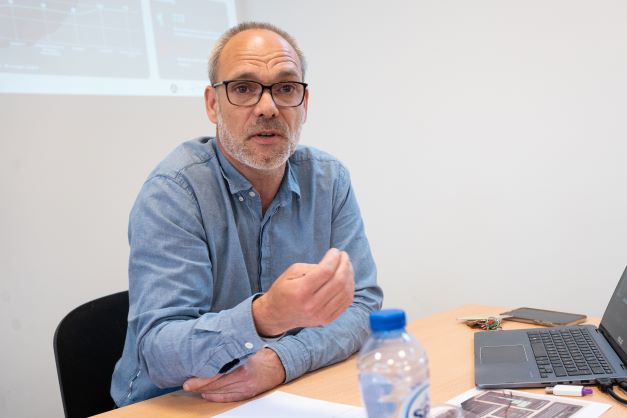
Under medical supervision
Inside the bright, freshly painted building – there’s a security buzzer and camera to control access – a reception area awaits. First-time visitors need to register, anonymously if they prefer. The centre, which opened in May 2022, is for hardened and vulnerable adult users only. Around half of the 70 to 80 people using its services on a daily basis are homeless.
For those simply needing clean materials to consume their drugs outside the centre, they can swap used paraphernalia for sterile products and depart via a separate exit. Otherwise, users – who bring their own class A illegal drugs with them – go through to the large waiting room. It’s a welcoming place, with drinks facilities, board games and a drawing area. Every room is discreetly supervised.
On another floor are the areas for drug taking, predominantly psychostimulant substances such as cocaine. There are booths for injecting and a separate room with powerful extractors for products that are inhaled. A fully equipped nurses station overlooks them all; it also offers privacy for the women who make up around 20% of the centre’s users, and who are often involved in prostitution.
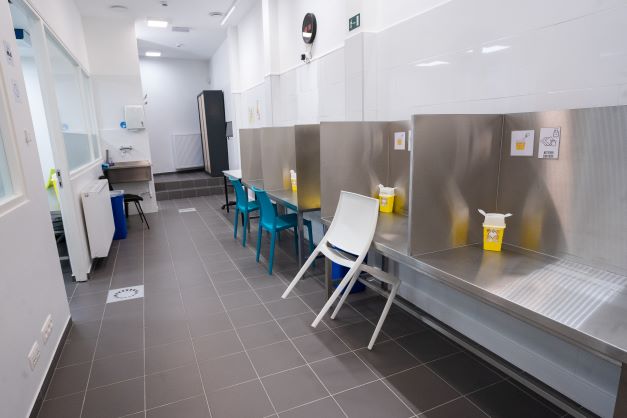
Staff keep an eye on the physical condition of users, especially those who are careless with how and where they inject. Anatomical drawings in each booth shows users the location of their main veins and arteries.
A recuperation room enables staff to be on the lookout for possible overdoses. There’s only been one, non-fatal, since opening. A small inner courtyard serves as a smoking area, deliberately positioned within the centre to encourage people to remain inside the facility. It’s an essential facility for users, who are generally hardened tobacco smokers.
Slipping through the net
Discrimination around access to healthcare, criminalisation and self-exclusion are all factors in people dropping through cracks in the system, says Valkeneers. “That’s why we created an accessible service with a space that allows this population to be put in contact with health professionals and social services.” The Brussels non-profit works alongside social-health organisation MASS, also specialised in helping marginalised drug users.
Gate’s innovative integrated service draws on the experience of some 100 drug consumption rooms set up around Europe over the past 30 years. It’s also seen a Belgian model in action: a facility in Liège that opened in 2018 in response to the city’s battle with drug consumption in public spaces.
One hurdle that Belgium had to overcome to launch these spaces was a repressive drug law dating from 1921, as a response to the international war on opium. They made it illegal to provide clean needles and a place to consume drugs. While Liège circumvented the laws by reaching an agreement with the local prosecutor’s office, the Brussels facility required an amendment incorporating harm reduction policies and strict criteria for safe drug spaces.
The €1.8 million Gate project was financed by the city of Brussels, and supported by the Brussels-Capital Region and judicial authorities. Valkeneers credits Brussels mayor Philippe Close (PS) for his political determination to see the project to fruition.
“As we arrived late on the scene, the advantage is that we’ve been able to offer a 2.0 model compared to the first initiatives,” Valkeneers adds. This involves prioritising links with a multidisciplinary network and providing care packages, including food and showers, along with an existing shelter and street nurse programme.
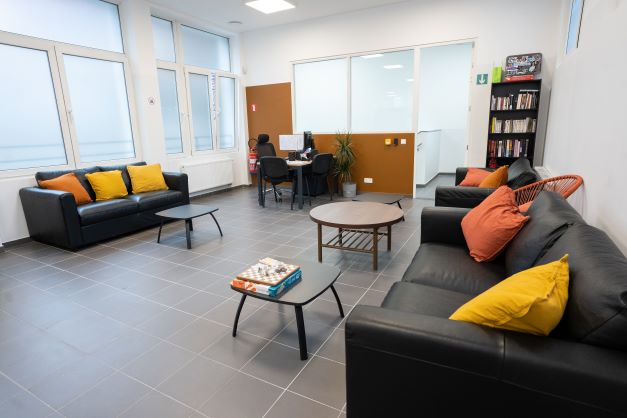
Harm reduction in action
Drug consumption spaces were established to provide clean materials and prevent overdoses. The first European centre in Bern, Switzerland, was a reaction to the notorious drug problems of Zurich in the 1980s and 90s. Its pragmatic four-pronged focused on practice, prevention, therapy, damage limitation and repression, proved an effective model for the safe spaces that followed, including in Germany and the Netherlands. Overdose rates dropped in countries that adopted the policy.
The philosophy of harm reduction underpinned all the initiatives. These public health-based principles and practices are aimed at reducing negative outcomes of some behaviours, from wearing seatbelts and applying sun screen to criminalised activities such as sex work and drug use.
They are also at the forefront of the debate over the proliferation of innovative tobacco products that have been scientifically proven to reduce mortality and morbidity among smokers. These include alternative nicotine products like e-cigarettes that can play a positive role in helping people to quit. Vulnerable and disadvantaged smokers in particular would be helped by their potential benefits.
At Gate, harm reduction in practice includes a range of health initiatives such as testing for hepatitis C and HIV that in the long term reduce the burden on public health services.
Whatever the domain - at the heart of harm reduction - is the principle of being non-judgemental, Valkeneers says. “It’s taking the person as they are at this moment in time and offering them the means to reduce the risks connected to their drug consumption, while importantly creating a bond with them.”
He’s quick to contradict the “misrepresentation” that it’s drugs themselves that cause the problem. “Addicts have a life journey that’s often complicated; they find themselves on the street and discover a life of dependence.”
Comparison with alcohol addiction
Unsurprisingly, alcohol addiction is prevalent among the homeless, says Valkeneers. “When it’s cold outside, it warms you up and temporarily helps you forget your situation. But it also leads to numerous problems.”
He deliberately compares highly-addictive alcohol to illegal drugs because public discussion over drug taking tends to ignore it.
The underlying factors behind all addictions are similar as are the levels of dependency. “If you took all the consumers of alcohol, heroin, crack or cocaine, the number of people who will develop an addiction or a chronic disease is the same, between 10% and 14%.”
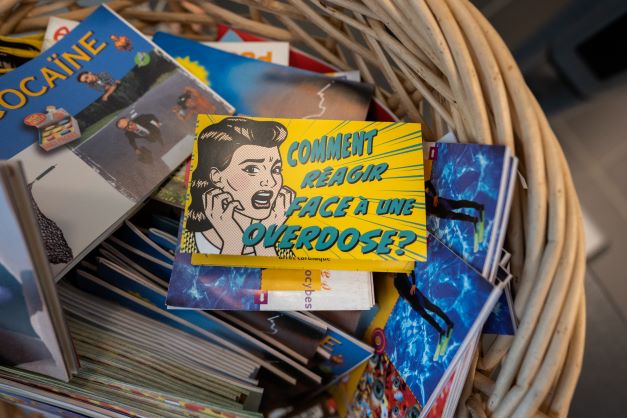
Countering critics
After 20 years working in the sector, Valkeneers is adept although frustrated at countering critics. Among the concerns for the project in Brussels were that it would attract dealers to the area, while sanctioning and encouraging drug use. A consultation process with neighbours and local police alleviated fears, and more than six months after its inauguration, the Gate team is pleased with its progress.
“We’ll have a full report after a year, but it’s already very positive,” says Valkeneers, highlighting feedback from users “who don’t take drugs in the street for pleasure” about the importance of having somewhere safe and private to get their fix. It’s also changed their relationship with the product, he adds. “They’ve told us that when they come here, they meet other people, they have other activities and they consume less.”
As for the wider debate about the continuing problem of drug addiction, he views it as a reflection of a society that favours individualism to the detriment of people who are left behind.
“The prohibitionists, who have a moral vision constructed around the idea that it’s possible to eradicate drugs, and justify the criminalisation of users, are idealistic.” While recognising the complexity around all addictions, he believes they’re a form of self-medication that for some can quickly become a means of survival.
Human approach to treating addiction
“There are universal factors, but behind each addict lies a person with their own experience, and this requires a personalised treatment plan.” It’s this human approach that is the most effective, he says. “When you’re excluded, living on the streets, without a future, how are you going to get better?”
The coronavirus pandemic increased social isolation, anxiety and precarity, while intensifying the commercial aspect of the drug market, he believes. “When borders closed and people couldn’t move around, instead of hanging around street corners, dealers started home deliveries.”
Safe drug rooms play a key role in the fight against drugs and need to be further developed, says Valkeneers. “There’s no miraculous solution. There needs to be a fully integrated centre and shelter in the future.”
Photos: © Belga/Juliette Bruynseels









